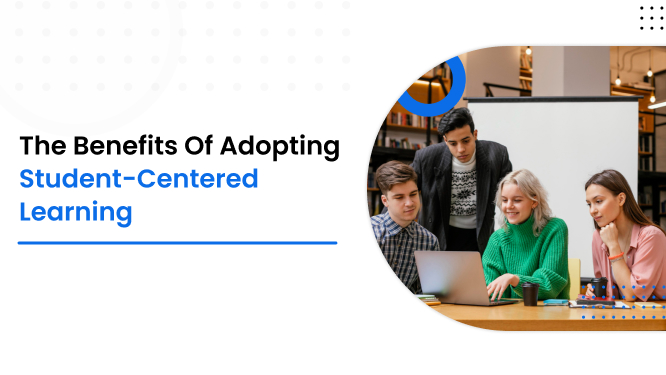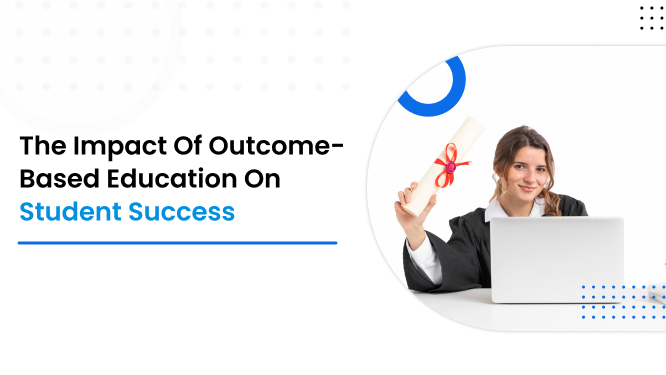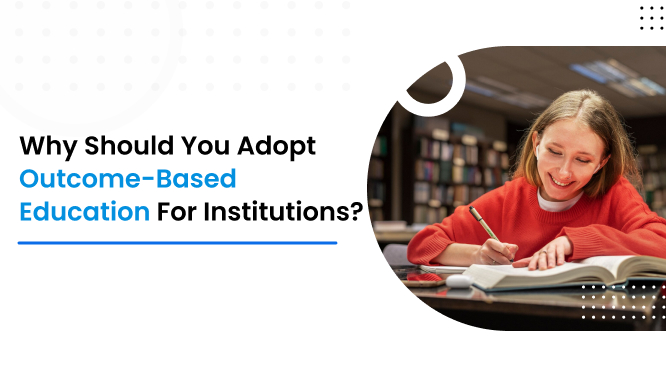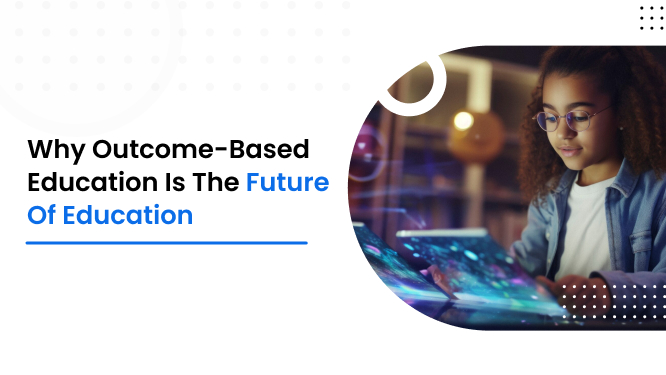The Benefits of Adopting Student-Centered Learning
Student-centered learning focuses on putting the student at the heart of the education process. This approach acknowledges that every student learns differently, with their own preferences, interests, styles, and abilities.
In this blog, we'll discuss the main ideas, benefits, and practical strategies related to student-centered learning in education.
Table of Contents
- What is Student-Centered Learning?
- Key Principles of Student-Centered Learning
- Benefits of Student-Centered Learning
- Bridging Methods: When OBE Meets SCL
- Synergy Between OBE and SCL
- End Note
What is Student-Centered Learning?
Student-centered learning is an educational approach that shifts the focus of instruction from the teacher to the student. It recognizes that each student is a unique learner with distinct preferences, interests, learning styles, and abilities.
Student-centered learning aims to foster student autonomy and independence. Instead of teachers dictating a fixed curriculum, students take an active role in shaping their learning journey.
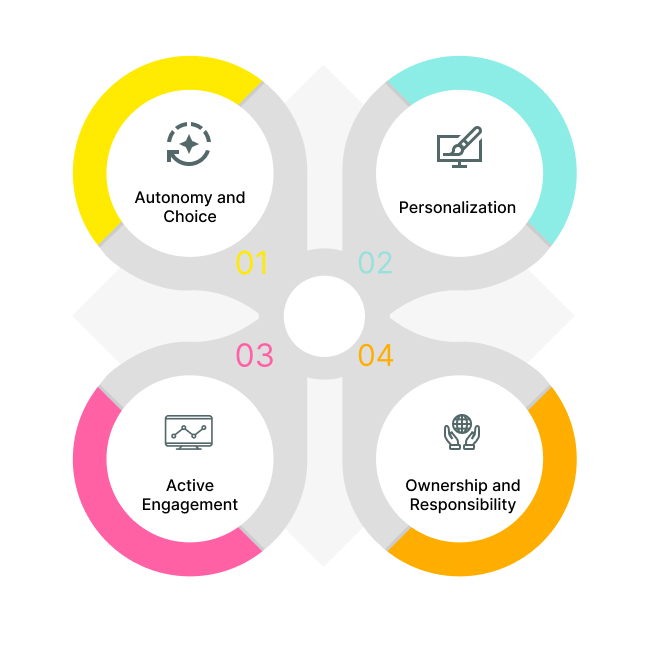
Here’s what defines student-centered learning:
1. Autonomy and Choice
- Students make decisions about their learning. They choose what to study, set their goals, and figure out how to achieve them.
- Teachers offer various options, letting students pick topics, projects, or activities that match their interests and goals.
2. Personalization
- This approach acknowledges that each student learns differently. Teachers adjust their methods to suit different learning styles, speeds, and preferences.
- Personalization includes not just content but also the pace of learning, ways of assessment, and the learning environment itself.
3. Active Engagement
- In student-centered classrooms, students are active participants, not just passive listeners. They join discussions, solve problems, and engage in hands-on activities.
- This active involvement leads to deeper understanding, better critical thinking, and improved knowledge retention.
4. Ownership and Responsibility
- Students take charge of their learning journey. They set goals, track their progress, and reflect on their experiences.
- Responsibility for learning shifts from the teacher to the student, encouraging a sense of accountability.
Key Principles of Student-Centered Learning
Let's explore the key principles that define student-centered learning:
1. Constructivism
Student-centered learning aligns with constructivist theory. Instead of seeing teachers as the only source of knowledge, it recognizes that students bring their own knowledge, skills, and motivation to the classroom. Key aspects include:
- Prior Knowledge: Students build on what they already know. Teachers help connect new information to existing knowledge.
- Active Construction: Learning is an active process where students create meaning by engaging with content, peers, and real-world contexts.
- Problem-Solving: Students take on problem-solving tasks, applying their knowledge to real-life situations.
2. Student Voice
In student-centered classrooms, students have a say in their learning. Here’s how student voice is encouraged:
- Choice: Students choose topics, projects, and learning paths. Their input shapes lesson planning.
- Feedback and Reflection: Teachers seek student feedback and encourage them to reflect on their learning experiences.
- Co-Creation: Students work with teachers to design activities, assessments, and classroom rules.
3. Empowering Students
Empowerment is central to student-centered learning. Here’s how students are empowered:
- Goal Setting: Students set learning goals based on their interests and aspirations, guiding their learning journey.
- Self-Regulation: Students manage their own learning. They monitor progress, adjust strategies, and seek resources independently.
- Agency: Students become active participants in their education, advocating for their needs and preferences.
4. Collaborative Learning
Student-centered classrooms focus on collaboration and social interaction. Key elements include:
- Group Work: Students work in small groups, sharing ideas, solving problems, and creating knowledge together.
- Peer Learning: Students learn from and with each other. Peer feedback and teaching enhance understanding.
- Real-World Connections: Collaborative projects often reflect real-world scenarios, preparing students for teamwork beyond the classroom.
Benefits of Student-Centered Learning
Student-centered learning is an effective educational approach emphasizing student agency, engagement, and active participation. Let's explore the compelling benefits of adopting student-centered learning:
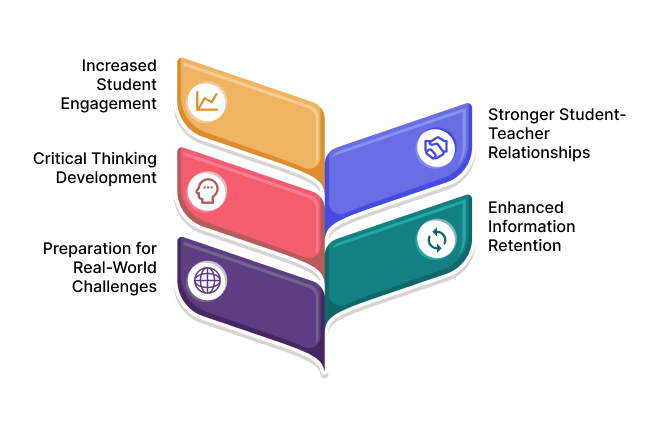
1. Increased Student Engagement
- Personal Relevance: When students have a say in their learning, it becomes more personally relevant. They can dive into topics that match their interests, passions, and real-world concerns.
- Choice and Autonomy: This approach lets students decide what to learn, how to learn it, and at what pace. This autonomy fosters ownership and motivation.
- Active Participation: Students engage in discussions, problem-solving, and collaborative activities. Their curiosity leads to deeper exploration and understanding.
- Retention and Application: Engaged students retain information better because they connect it to their experiences. They are more likely to apply what they've learned in practical contexts.
2. Stronger Student-Teacher Relationships
- Guided Facilitation: In student-centered classrooms, teachers act as facilitators rather than just knowledge providers. They listen to students, adapt instruction, and build trust.
- Individualized Support: Teachers get to know their students better. Understanding their learning preferences, strengths, and challenges allows for more personalized support.
- Collaboration: As teachers and students co-create learning experiences, their relationships become more collaborative and respectful.
3. Critical Thinking Development
- Complex Problem-Solving: Student-centered learning promotes critical thinking. Students analyze information, evaluate evidence, and apply knowledge to solve real-world problems.
- Higher-Order Skills: Beyond memorization, students develop skills like analysis, synthesis, and evaluation, which are crucial for success in higher education and the workforce.
- Metacognition: Students reflect on their thought processes, consider different viewpoints, and make informed decisions, becoming more self-aware learners.
4. Enhanced Information Retention
- Meaningful Connections: When students actively construct their learning, they make meaningful connections. They relate new information to what they already know, making it more memorable.
- Application and Transfer: Retained knowledge is more likely to be applied in various contexts. Students see the relevance of their learning beyond the classroom.
5. Preparation for Real-World Challenges
- Self-Direction: Student-centered learning equips students with self-directed learning skills. They learn to set goals, seek resources, and adapt to changing circumstances.
- Curiosity and Adaptability: Curious learners thrive in dynamic environments. This approach nurtures curiosity, encouraging students to explore and adapt.
- Collaboration and Communication: Real-world challenges often require teamwork. Students learn to work effectively in teams, communicate ideas, and negotiate solutions.
Bridging Methods: When OBE Meets SCL
Outcome-based education (OBE) and student-centered learning are two educational approaches that, when combined, can greatly enhance the learning experience. Both focus on student growth and engagement but achieve this through different, yet complementary, methods.
But what is Outcome-Based Education?
Outcome-based education (OBE) is an educational framework that focuses on achieving specific outcomes. These outcomes are clearly defined goals that students should reach by the end of their educational journey.The OBE model ensures that all educational activities align with these desired outcomes, which are often the skills and knowledge students need for real-world success.
Here are some key components of Outcome-based education:
- Explicit Learning Outcomes: OBE starts with clear goals in mind. By setting these objectives, educators can design curricula and instruction that guide students toward achieving them.
- Alignment: Every part of the educational process, from teaching methods to assessment techniques, aligns with the intended outcomes, ensuring a unified learning experience.
- Assessment for Learning: Outcome-based education uses continuous assessment to provide feedback to students, helping them understand their progress and identify areas for improvement.
- Continuous Improvement: The OBE approach promotes regular review and refinement of educational practices to enhance student learning outcomes.
Synergy Between OBE and SCL
Outcome-Based Education (OBE) and Student-Centered Learning (SCL) are not mutually exclusive; in fact, they can enhance each other when thoughtfully integrated. Let's explore how these two educational approaches intersect and create a powerful synergy:
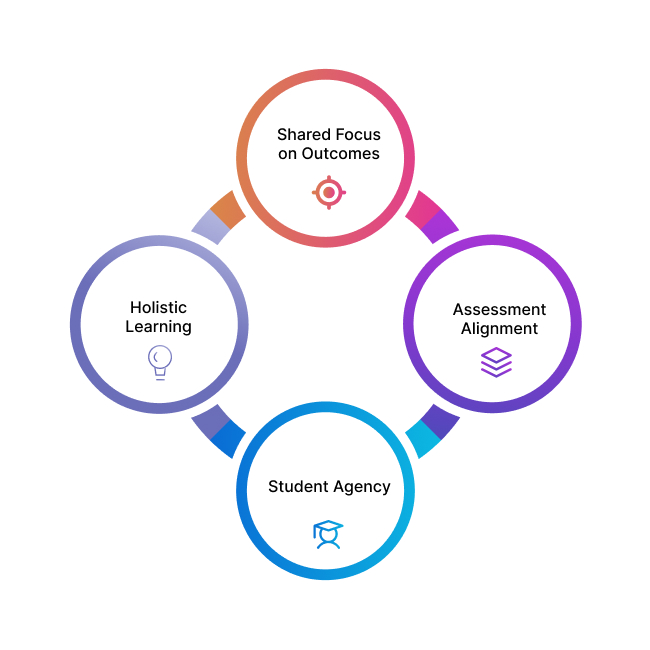
Shared Focus on Outcomes
- Both OBE and SCL focus on achieving specific learning outcomes. OBE defines these outcomes clearly, while SCL ensures students actively work towards them.
- OBE provides the framework, and SCL makes sure students engage meaningfully with the desired outcomes. When students have a voice in shaping their learning experiences, they become more committed to achieving those outcomes.
Assessment Alignment
OBE's assessment strategies align well with SCL's emphasis on formative assessment. Here’s how they complement each other:
- OBE Assessment: Outcome-based education uses assessments to measure if students have achieved the intended outcomes. These assessments offer valuable feedback.
- SCL Feedback Loop: SCL promotes ongoing feedback and reflection. Students get formative feedback, adjust their learning strategies, and actively participate in their own growth.
Together, OBE and SCL create a continuous improvement cycle where assessment informs instruction, and student input informs assessment.
Student Agency
- SCL promotes student agency, complementing OBE’s goal of empowering learners. When students have a say in their learning, they become more committed to achieving outcomes.
- OBE’s explicit outcomes become more meaningful when students engage in setting goals, making choices, and reflecting on their progress.
- Student agency fosters motivation, ownership, and a sense of responsibility for learning.
Holistic Learning
- SCL encourages holistic development beyond academic outcomes, considering social-emotional skills, creativity, and critical thinking—essential for lifelong success.
- OBE outcomes often extend beyond subject-specific knowledge to include skills such as communication, problem-solving, and adaptability.
- When integrated, OBE and SCL ensure that students meet academic benchmarks and develop broader competencies needed for success in a rapidly changing world.
Final Note
Adopting student-centered learning transforms education by placing students at the core of their learning journey. This approach caters to their unique preferences and styles and fosters autonomy, critical thinking, and deeper engagement.
When integrated with Outcome-Based Education (OBE), the synergy enhances these benefits further. OBE provides a clear framework of desired outcomes, while student-centered learning ensures active, meaningful engagement with these goals.
Together, they create a cohesive, dynamic educational experience that prepares students for real-world challenges by promoting both academic excellence and essential life skills.
Embracing this combined approach can lead to more motivated, self-directed learners who are well-equipped for lifelong success.
